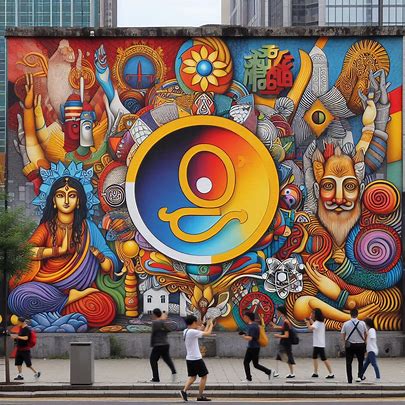
Cities worldwide are embracing street art as a tool for revitalization. Murals are no longer just graffiti—they’re bold statements of culture, identity, and community pride. From São Paulo to Singapore, artists are turning blank walls into vibrant canvases, sparking conversations and drawing tourists. This trend is reshaping urban landscapes in 2025.
Why Murals Are Trending
Murals are gaining traction for their ability to transform neglected spaces. Cities like Miami and Berlin host annual street art festivals, attracting global talent. These events boost local economies and foster community engagement. Social media amplifies their reach—Instagram posts of colorful walls rack up millions of likes. Artists like Banksy and Shepard Fairey inspire a new generation to use public spaces for storytelling.
Community-Driven Art
Local communities are at the heart of this movement. In 2025, cities are commissioning murals that reflect their unique histories. For example, Detroit’s murals celebrate Motown’s legacy, while Cape Town’s honor anti-apartheid heroes. Residents often collaborate with artists, ensuring authenticity. These projects build pride and unity, turning rundown areas into cultural hubs.
Sustainability in Street Art
Eco-friendly murals are a rising trend. Artists are using non-toxic paints and sustainable materials to reduce environmental impact. In London, “living walls” combine murals with vertical gardens, improving air quality. This blend of art and sustainability resonates with younger audiences who value green initiatives. It’s a win-win for aesthetics and the planet.
Technology Enhances Murals
Augmented reality (AR) is taking murals to new heights. In Tokyo, AR apps let viewers scan murals to see animations or hear stories about the artwork. This interactive element draws tech-savvy crowds. It also allows artists to layer digital effects, making their work dynamic. Expect more cities to adopt AR murals in 2025, blending physical and digital art.
Challenges and Controversies
Not everyone loves the mural boom. Some residents view street art as vandalism, especially when it’s unsanctioned. Gentrification is another concern—murals can attract wealthier newcomers, pricing out locals. Cities must balance artistic freedom with community needs. Clear guidelines and public input help avoid conflicts and ensure murals benefit everyone.
What’s Next for Urban Murals
The mural trend shows no signs of slowing. Expect more interactive and sustainable designs in 2025. Cities will likely invest in mural districts, like Los Angeles’ Arts District, to boost tourism. Collaborations between artists and tech companies will push creative boundaries. Murals are proving art can change not just walls but entire communities.
